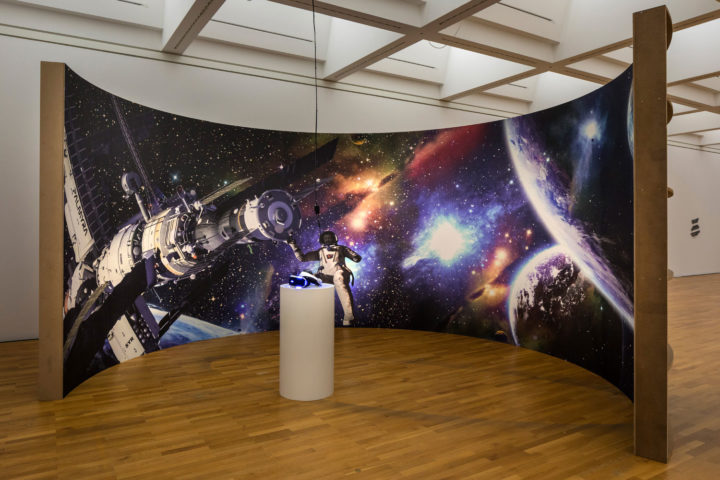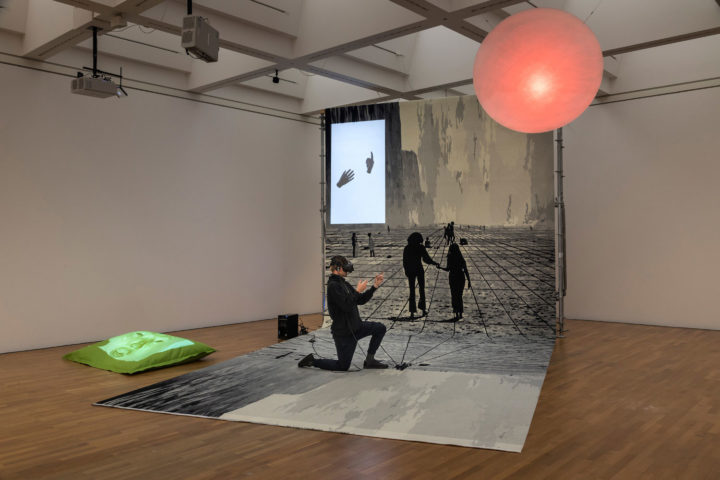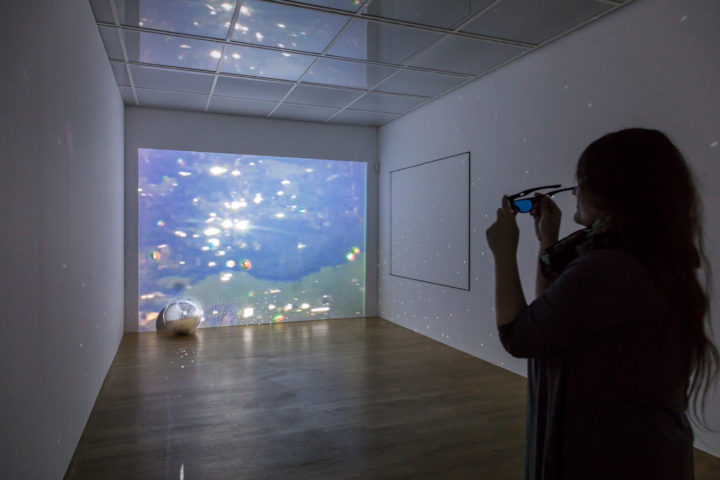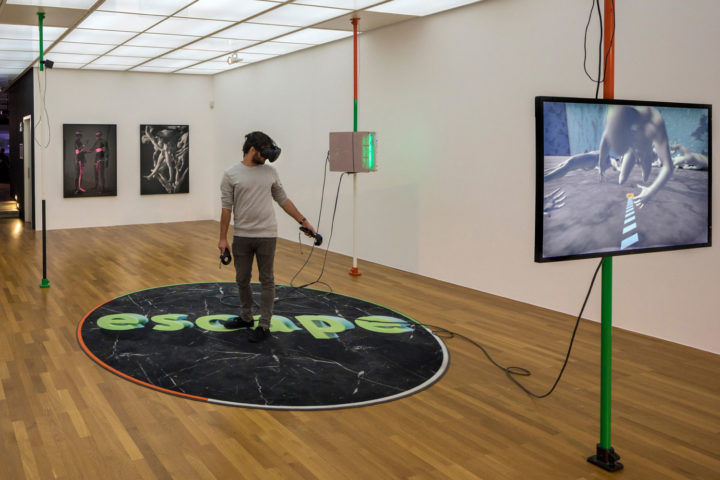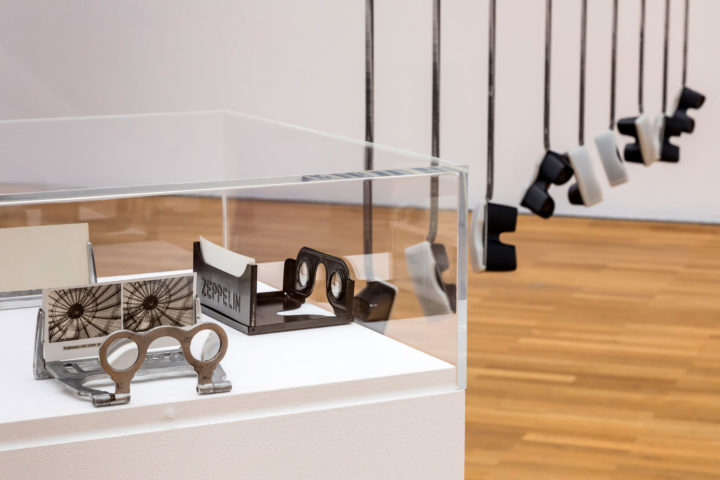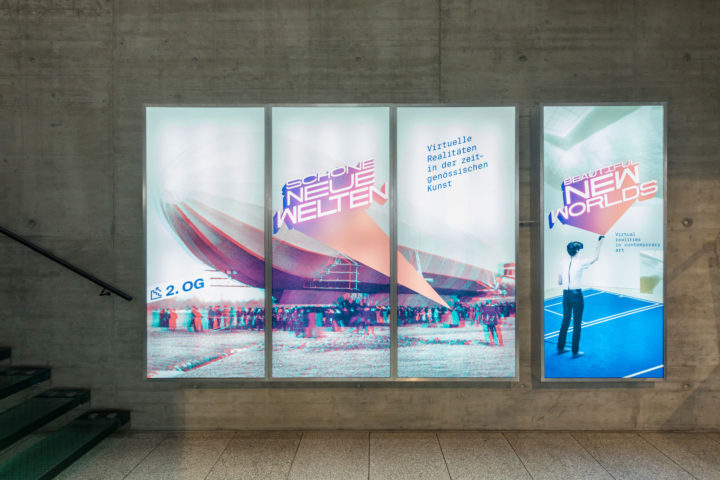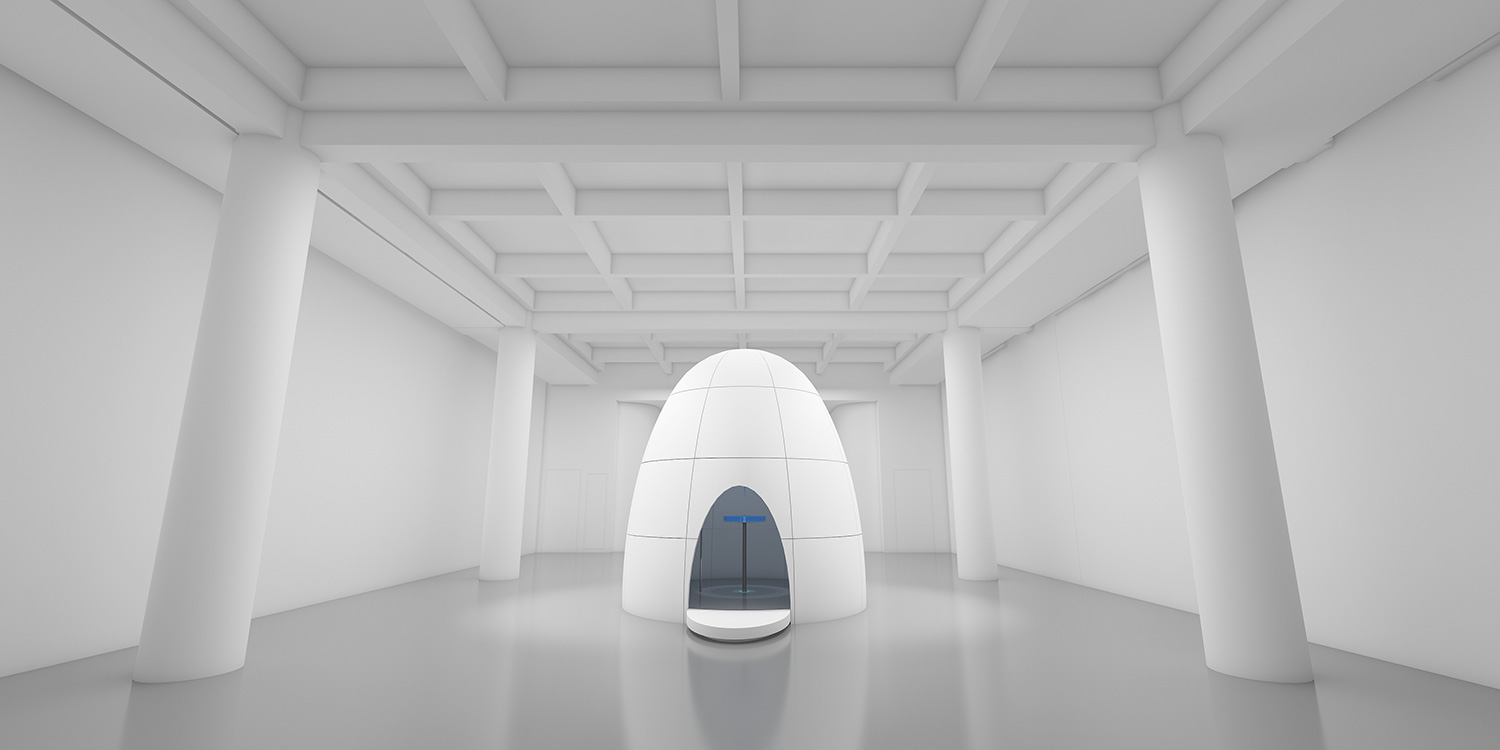Perhaps it’s the ever-so-slight motion that catches your eye. The first thing you see as you walk into the Zeppelin Museum’s “Schöne Neue Welten” (Beautiful New Worlds) exhibition are little viewfinders, dangling on springs. They’re tethers between this exhibition on virtual reality and its unlikely venue, a provincial German institution devoted to the history of airship technology, housed in a gorgeous Bauhaus railway station. Each viewfinder contains a sample of stereoscopic images used to promote zeppelins in the early twentieth century, black-and-white photos refracted into a 3-D illusion. For head curator Ina Neddermeyer, this primitive virtual world was a vital preface to the cutting-edge realms that form the exhibition.
The parallels are dark, and perhaps all too apposite. This is, after all, an exhibition about the political uses of technology. Where once zeppelins became flagships for fascism, so too have virtual technologies abetted a contemporary variant on that ideology. About halfway through the exhibition, two films dueling on opposite walls complete a terrible loop. One shows virtual reality being used to train American soldiers, while the other shows how it helps treat the PTSD they suffer as a result of the wars they fight (Harun Farocki, Serious Games I & III, 2010).
The effect is brilliant. From sunny halls to darkened corridors to spartan rooms, there’s attention to flow and presentation that enlivens every aspect of the exhibition. Yellow guardrails, seemingly ripped from a Metro somewhere, gently guide visitors through the open-concept space.
One notable presentation stands out. Becoming Dragon, by Micha Cárdenas, is a 2008 mixed-reality performance in which the artist dramatized her experience in the online game Second Life. It is presented at the Zeppelin Museum as a recording of the artist immersed in the game, projected onto a wall. She lived as a dragon in the game for 365 hours, intending to parallel the imposition of a yearlong waiting period for transgender people who sought sexual reassignment surgery. If you were forced to take a yearlong test to prove you are who you know yourself to be, why not become something else in the meantime? Those possibilities blossom in gaming universes, and several of the works in the exhibition play with that.
The politics of a new commission from New York-based German artist Florian Meisenberg, whose installations combine painting and sculpture with digital media, are more subtle and certainly more playful. Pre-Alpha Courtyard Games (raindrops on my cheek) (2017) is an elaborate VR setup in which you manipulate a virtual wireframe that only you can see. Onlookers, who see only your disembodied hands projected onto a nearby wall, must piece together for themselves what you are doing.
Meanwhile, the more visceral politics of the refugee crisis manifest in the virtual film Journey to Mars (2016) by Halil Altindere, which ironically posits Mars as the only place willing to accept Syrian refugees (this pairs neatly with another piece — Forensic Architecture’s Saydnaya, 2016) — which shows how VR can reconstruct Assad’s prisons from the memories of its survivors). Like the Nest Collective’s Let This Be A Warning (2017), also included in the exhibition, Journey is a virtual film. But Warning is more unsettling as it’s slightly more involving, with your interactivity limited to looking around furtively while rooted in place. You are an interloper astronaut on an African world, treated with all the loathing and suspicion that migrants to Europe often experience. Your highly constrained ability to move makes this piece brilliantly expressive; you feel like a helpless passenger rather than a mere observer. This urgent masterpiece from Nairobi anchors the collection.
You’ll find wickedly involving porn here (Sidsel Meineche Hansen’s DICKGIRL 3D(X), 2016) and weirdly wonderful commentary on Silicon Valley (artist duo Banz & Bowinkel’s Palo Alto, 2017) — all held together by the through line of political implication. Most important of all, however, a case is made for emphasizing the reality of the virtual. The line between simulation and the reality it imitates becomes blurry here, as it should. Neddermeyer and her colleagues deserve credit for capturing it all.
Still, one imagines, in a few weeks’ time there’ll be more than a few broken headsets, toppled PC towers and impossibly tangled cords from all the inevitable roughhousing that the equipment will experience. Reality intrudes in more mundane ways, after all.
Museums still haven’t quite figured out how to bridge the virtual/physical divide, and the Zeppelin Museum is no exception. The headset itself is, invariably, an art object in any installation — a point made clear by the contribution of a VR set from the 1990s displayed here under glass. At the Zeppelin Museum the headset is, in the case of Altindere’s Journey to Mars, surrounded by a semicircular mural depicting the sci-fi publicity of the installation; in the case of Let This Be A Warning, suspended spider-like from the ceiling in an austere room; in the case of Courtyard, adrift on a carpet surrounded by the carpet-like playfield of Meisenberg’s virtual world. An attempt was clearly made to give each headset and computer a meaningful place in the installation. Banz & Bowinkel leaned into it by making their computer tower a glittering, branded affair of plexiglas and LEDs.
Art and design are restored to their unity here; the tech is part of the aesthetic experience. But the displays remain somewhat anarchic as well. As with VR itself, there is no final word on what it all means, what it’s all for, or where it’s all going.
You can see this as a failing, but it must have been so with the zeppelins of old. And we again return to the unsettling analogy that frames this exhibit and wonder if we’ve already sailed into the storm.

